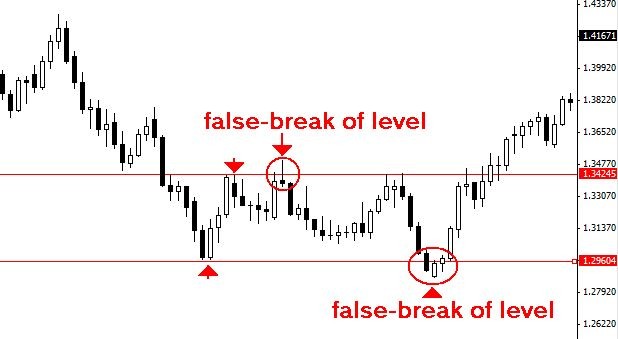How to Trade False Breakouts
Post on: 6 Апрель, 2015 No Comment

One of the best risk to reward trading setups is the breakout trade. Many traders are aware of the fact that after price settles into a consolidation box, price will often breakout of the box with a violent and extended move.
This does not mean, of course, that price will always make a violent and extended move after some time in the consolidation box. Traders who have attempted to jump on this type of breakout will attest to the fact that at times price will breakout of the consolidation box, and at other times an apparent breakout will turn into a fakeout.
Click here to order your copy of The VXX Trend Following Strategy today and be one of the very first traders to utilize these unique strategies. This guidebook will make you a better, more powerful trader.
In fact, fakeouts have become so common, some traders use the fakeout trading setup to make money. I will show you one way for you to trade this fakeout.
Many traders can identify a consolidation box, like the one depicted in this chart:
Price has been stuck between this support zone down low and the resistance zone above.
Obviously, these consolidation boxes are great because when price does eventually make it outside of the consolidation box it will often move very swiftly and far.
There is a possible breakout at the green arrow on this chart.
For many traders, these breakouts can be ideal trading setups because of the minimal risk. A stop loss can be placed inside the consolidation box and often the breakout will go quite far, offering a very favorable reward to risk ratio.
The problem for traders, though, is that often these breakouts prove to be fakeouts that is, many of these initial moves outside of the consolidation box fizzle out and price re-enters the box. Traders can be wary of jumping on the breakout because of the potential for a fakeout. How is it possible for traders to possibly determine a breakout from a fakeout?
In this case, the breakout was, in fact, a fakeout. Price fell back inside the consolidation box.
The answer may simply be to exercise a little patience. Many traders are aware of the fact that once support is broken it will often serve as resistance, and once resistance is broken it often becomes support. What this means for the breakout is that many times, after a true breakout, price will come back to touch the edge of the consolidation box before travelling further in the direction of the breakout.
After trading within the consolidation box, a breakout to the upsideis it a fakeout?
In the chart above, it is clear that price has been trading in a tight range, between the support and resistance zones. A potential breakout appears when price jumps over the resistance line. Traders will have to determine whether this is a true breakout, or merely a fakeout. However, waiting for the next bar to print will give a clue to traders who are watching the market.
The next bar touches the previous resistance zone, finds support and jumps upward. This is a great high probability trade setup. Traders can jump in here and buy the market because price has not only pushed through resistance, but found support at this important zone. Traders who have been patiently watching the market now know that the probabilities are in favor of a breakout, as a fakeout would have seen price come back and close inside the consolidation box.
Waiting for the breakout to touch the consolidation box may help increase the odds of jumping on a valid breakout.
Traders who take advantage of the fact that resistance often becomes support after a breakout (and the opposite for downside breakouts, where support often becomes resistance) are likely to find high probability trade setups. Simply waiting for the initial breakout move to unfold may help traders avoid the fakeouts, which eventually settle back inside the consolidation box and find the breakouts, which often show their true colors by sharply bouncing off of the consolidation box after the breakout.
Walter Peters, PhD is a professional forex trader and money manager for the DTS private fund. In addition, Walter is the co-founder of Fxjake.com. and often coaches other traders. If you would like to learn more about Walters trading strategies, take a look at Walters upcoming webinar .














